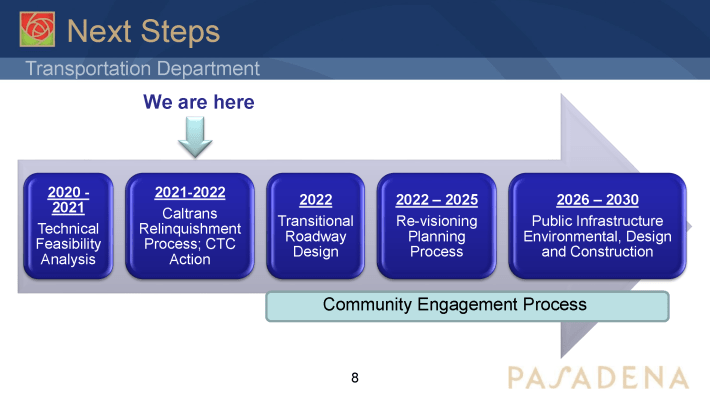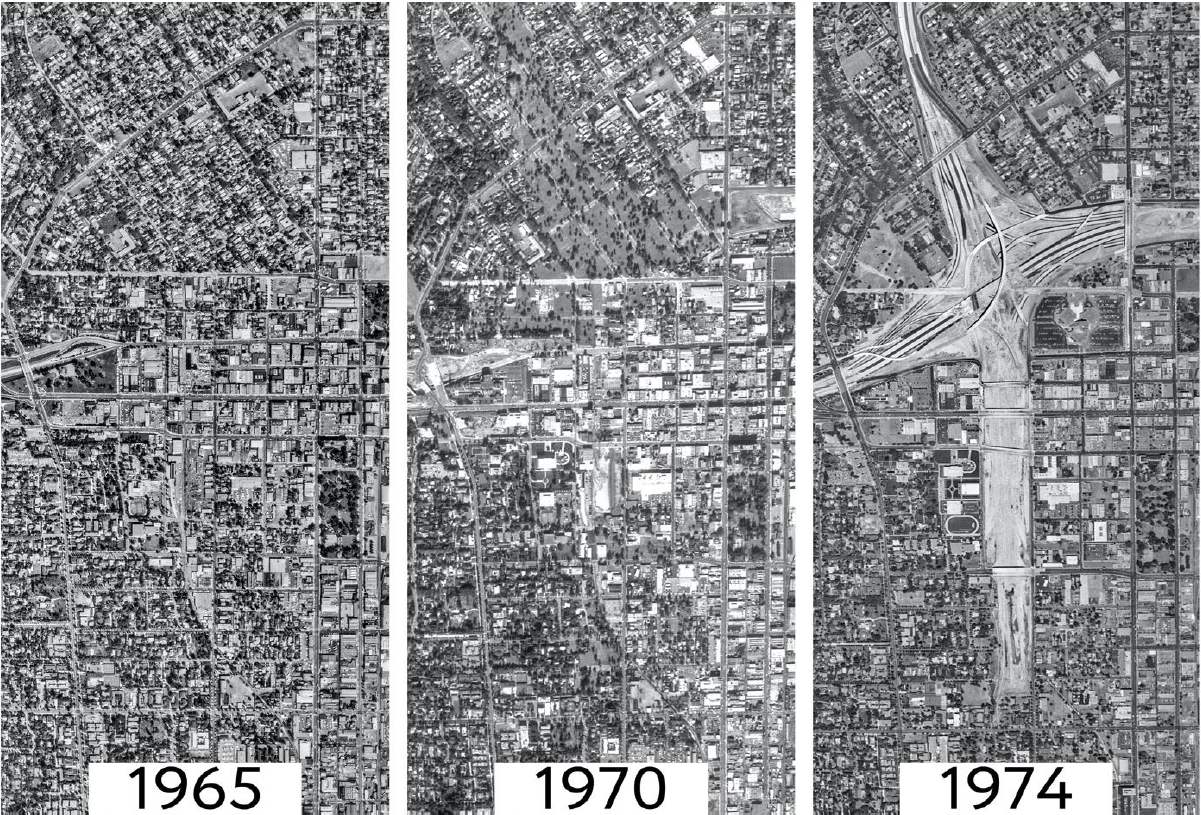City of Pasadena and Caltrans are currently in negotiations to transfer ownership of the 710 Freeway stub over to the city.
According to a recent city report, city staff have moved past studies that analyzed the feasibility of turning the SR-710 stub into a local street network and is moving toward developing a relinquishment agreement with Caltrans. This is following the cancellation of the highway tunnel project that would have connected the north 710 where it currently ends at Alhambra/El Sereno/South Pasadena through Pasadena to the 210 Freeway.
City of Pasadena transportation department staff gave updates about the relinquishment efforts recently at Wednesday's Metro Planning and Programming Committee meeting and the January 10 Pasadena City Council Meeting. The item is next headed to the January 26-27 California Transportation Commission meeting.
The moment is being presented as one of healing past traumas. From 1965-1974, when the state started buying up land through eminent domain for and pushing out residents, more than 4,000 residents were displaced and and more than 1,500 homes were destroyed. The stub area is bordered by Pasadena Avenue to the east, St John Avenue to the west, West Walnut Street to the north and West California Boulevard to the south.
"For us it is really important to be able to reconnect, rebuild and reestablish this community that was such an important part of the City of Pasadena," said Laura Rubio-Cornejo, Pasadena Director of Transportation, at the Metro committee meeting. "And it is with this in mind that we have moved forward with these relinquishment efforts."
A technical feasibility analysis that Pasadena completed last year determined that transitioning the stub to a local street network would be feasible without impacting safety and operations of the highway system. A supplemental analysis was also conducted, at the request of Caltrans, that showed in more detail the anticipated traffic conditions that would result from the removal of the 710 stub and connector roads, including ramp queuing and weaving along multiple sections of the 134 and 210 Freeways.

The technical feasibility analysis didn't look at things like land use and specific details about road design type, Rubio-Cornejo said. Those issues would be addressed in a long-range planning process expected to get underway between this year. The timing and process ensure that the land was first in local control and that the community has a say in the process, she added.
The relinquishment agreement would need to be adopted by the Pasadena City Council and the CTC to finalize the transfer of ownership.
A full reimagining of the stub is still a number of years away, with 2030 being the earliest any final design and construction is expected to be completed, according to the city's timeline.
City staff are looking at short term solutions that could happen as early as this year. Things like modernization and maintenance of the area, street network optimization, and incorporating multimodal and complete street designs are expected to be looked at and possibly incorporated into the stub area.
Whatever the short term solutions are, the long term solutions and vision will take priority over the any near term changes, Rubio-Cornejo said.
Hilda Solis, District 1 Los Angeles County Supervisor and Metro Board Chair, said at Wednesdays meeting that whatever was done on the stub, that she hoped to see some type of memorial to reflect and honor the impacts the 710 project had on the community.
"How can there be a tribute to memorialize these kinds of things that happened and they displaced many people in our community?" Solis said, "I think there’s almost a need to recognize some of that . . . and why this happened and as a result where we’re going now as a better direction."
SBLA San Gabriel Valley coverage, including this article and SGV Connect, is supported by Foothill Transit, offering car-free travel throughout the San Gabriel Valley with connections to the new Gold Line Stations across the Foothills and Commuter Express lines traveling into the heart of downtown L.A. To plan your trip, visit Foothill Transit. “Foothill Transit. Going Good Places.”
Sign-up for our SGV Connect Newsletter, coming to your inbox on Fridays.







